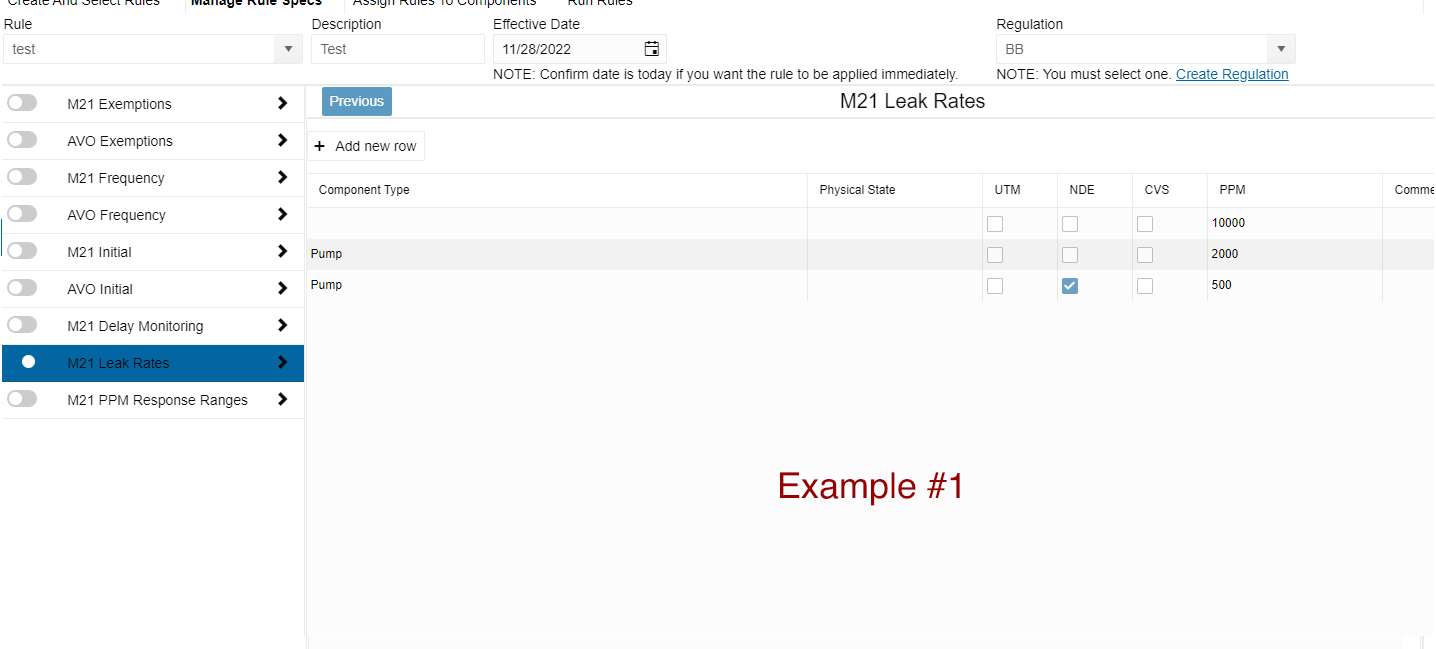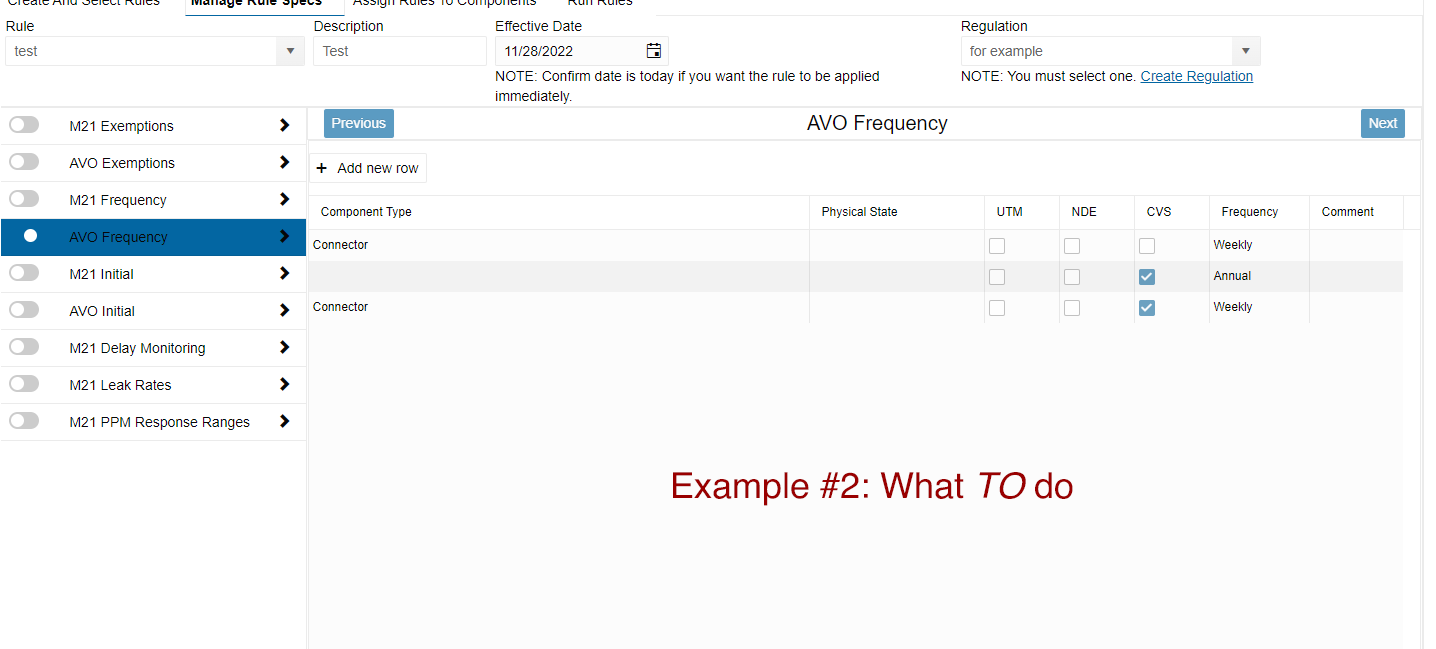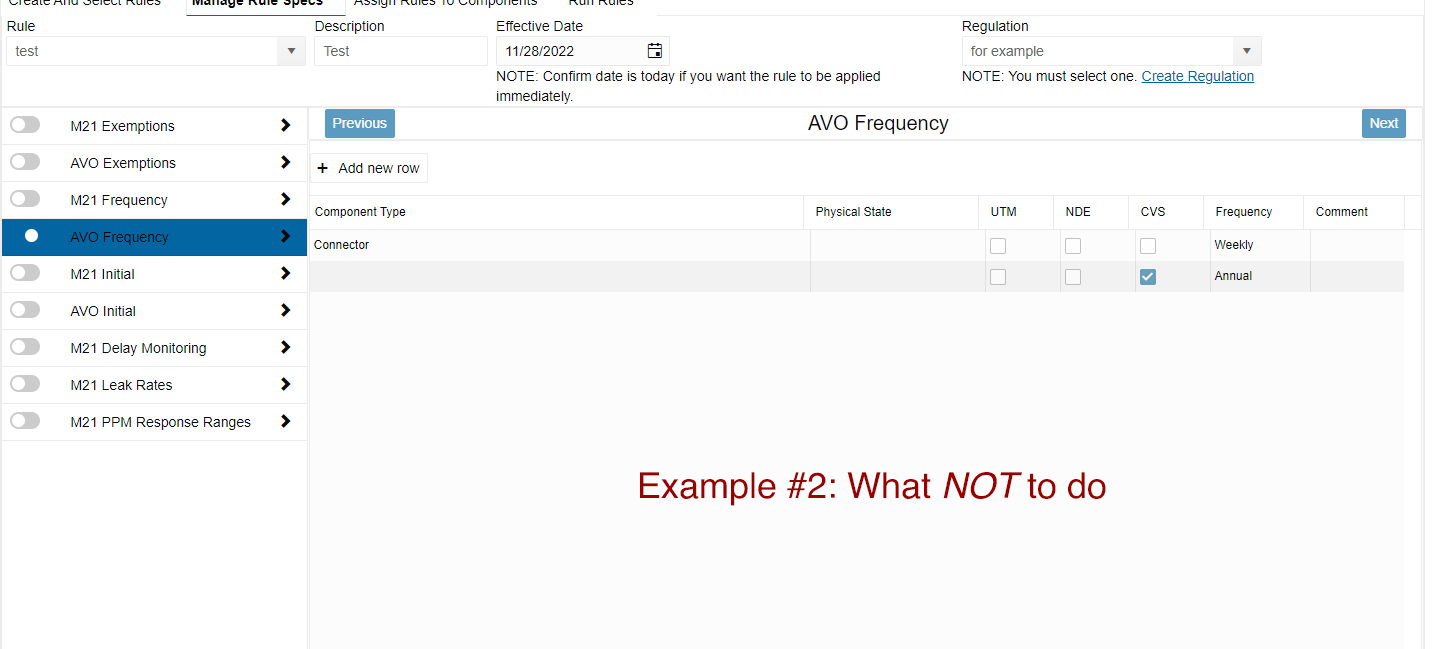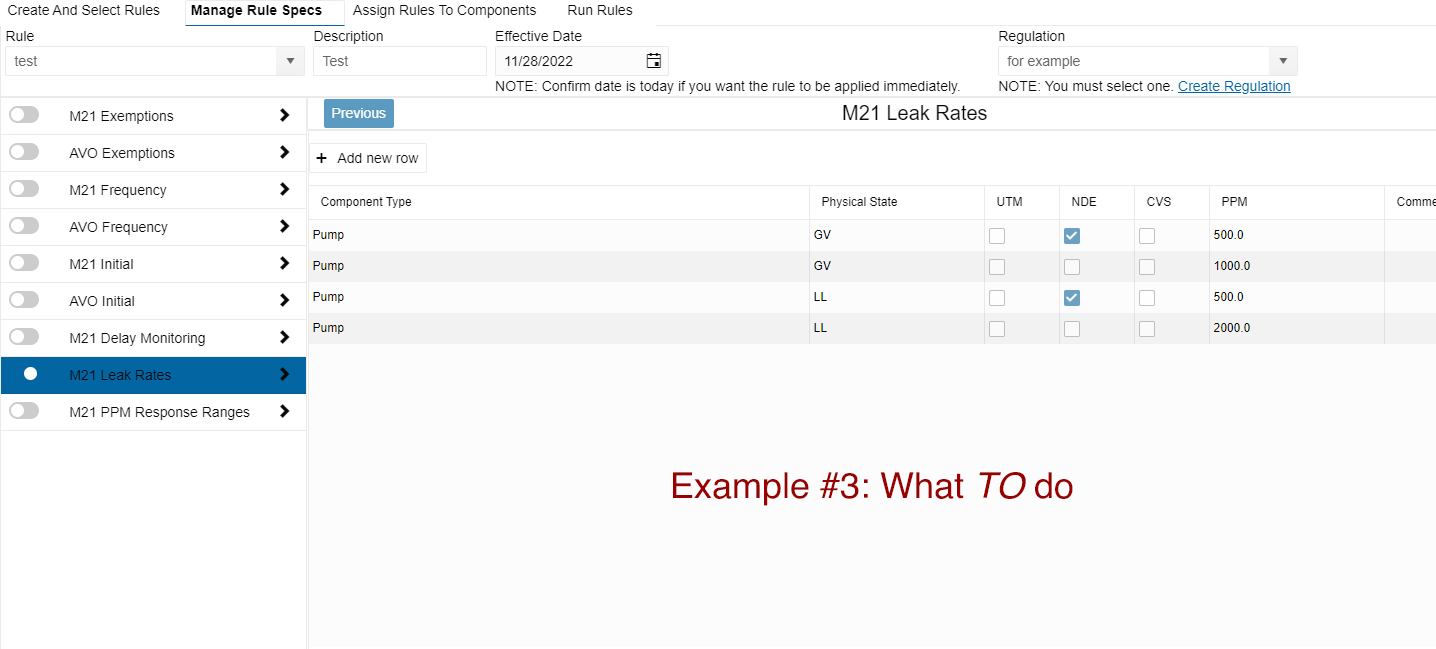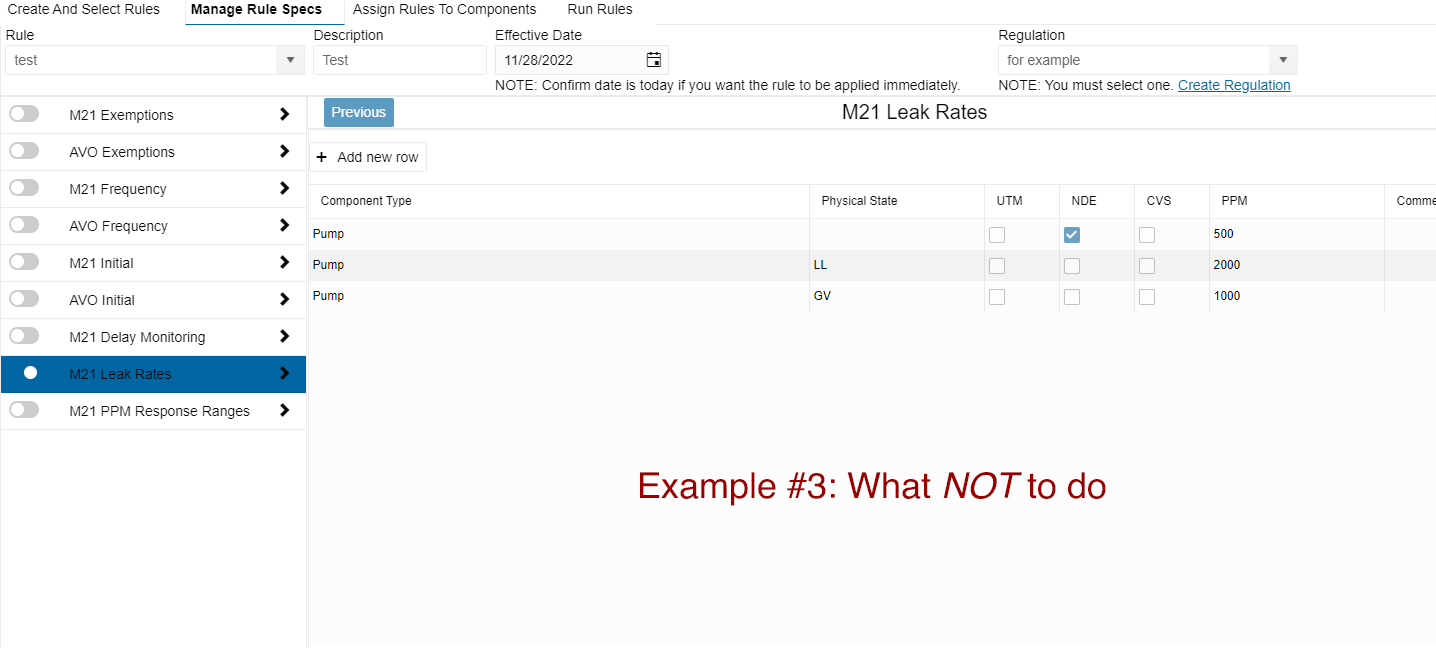Hierarchy of the dominance of component expressions in the rules, from most dominant to least dominant:
-
Physical State + Boolean + and SubSubType
-
Physical State + Boolean + and SubType
-
Physical State + Boolean + Type
-
Physical State + Boolean
-
Physical State + SubSubType
-
Physical State + SubType
-
Physical State + Type
-
SubSubType + Boolean
-
SubType + Boolean
-
Type + Boolean
-
Physical State only
-
Boolean Only
-
SubSubType only
-
SubType only
-
Type only
-
Neither Physical State, Boolean, or any Type
For example, if there is a 10000 ppm catch-all leak definition (Neither Physical State, Boolean, or any Type), any other leak definitions which are more specific in their component expressions (contains Type/Subtype, Physical State, Boolean or a combination of above) will take a higher precedence over it. This arrangement is preferred in most situations.
However, there are situations where specific setups are needed to correctly assign monitoring requirements or leak definitions.
If connectors (Type only) have weekly AVO frequency and CVS components (Boolean only) have annual AVO frequency, Chateau will assign annual AVO frequency to a CVS connector because “Boolean Only” is more dominant than “Type Only”. We will have to assign weekly AVO separately to CVS connectors (Type + Boolean) if we want to schedule weekly inspections for them.
If NDE pumps (Type + Boolean) have the leak definition of 500 PPM and light liquid pumps (Physical State + Type) have the leak definition of 2000 PPM, Chateau will assign 2000 PPM leak definition to an NDE light liquid pump, because “Physical State + Type” is more dominant than “Type + Boolean”. In this case we need to specify the physical state of the NDE pumps (Physical State + Boolean + Type), then the pump will have 500 PPM leak rate applied to it.

